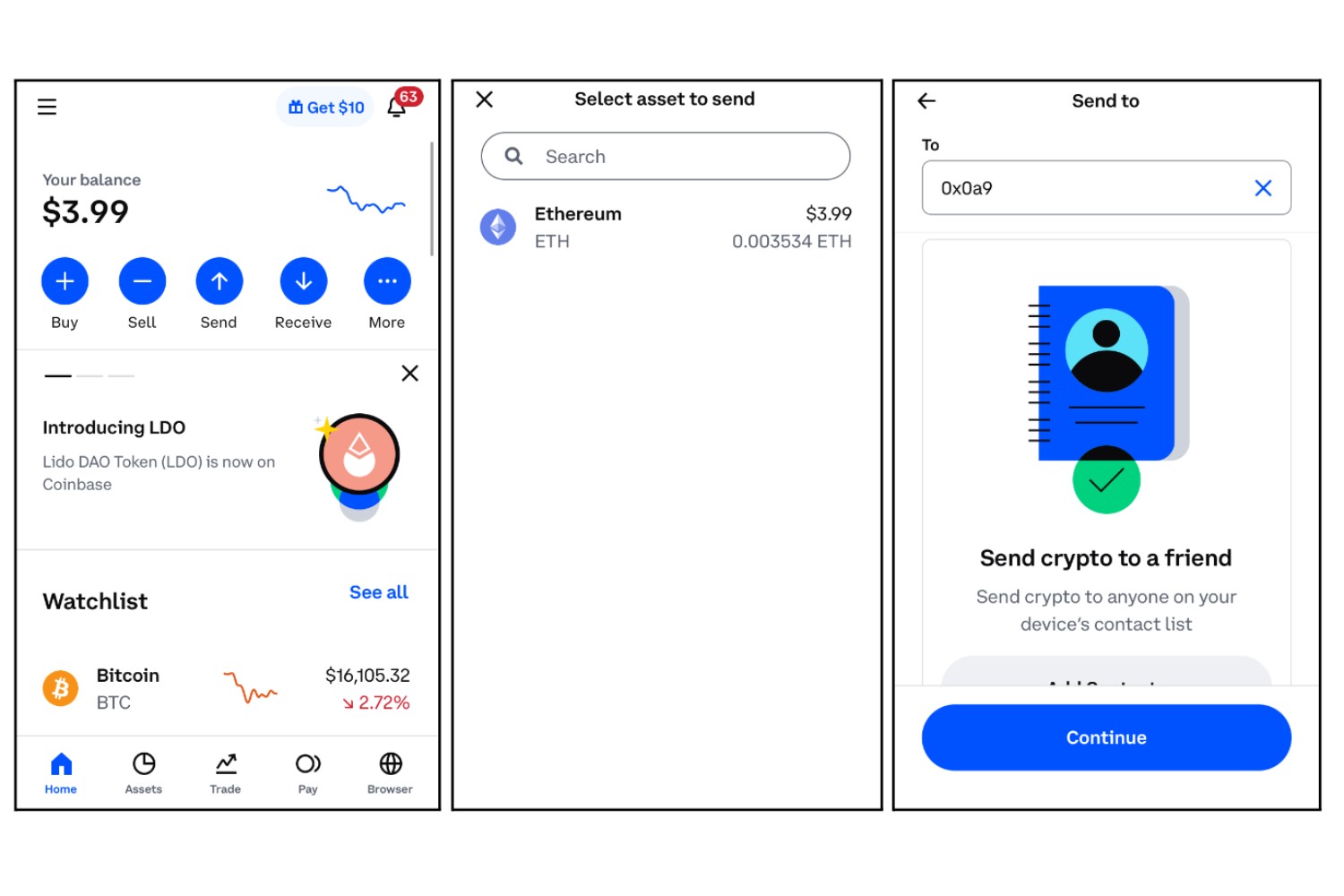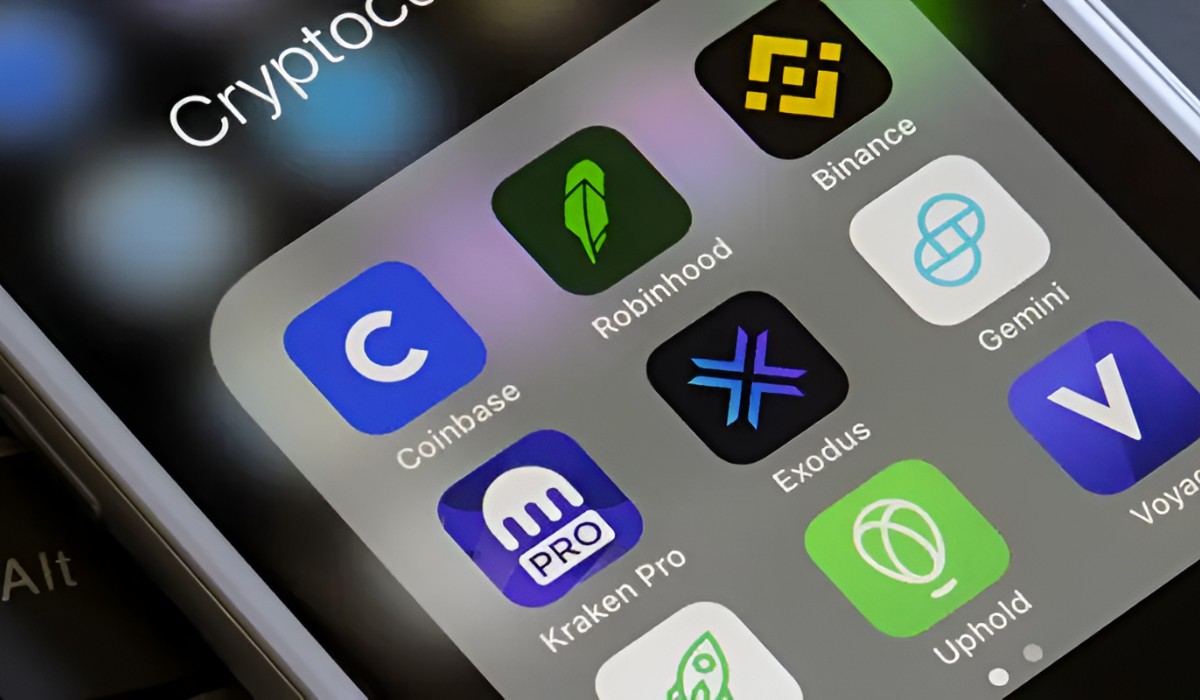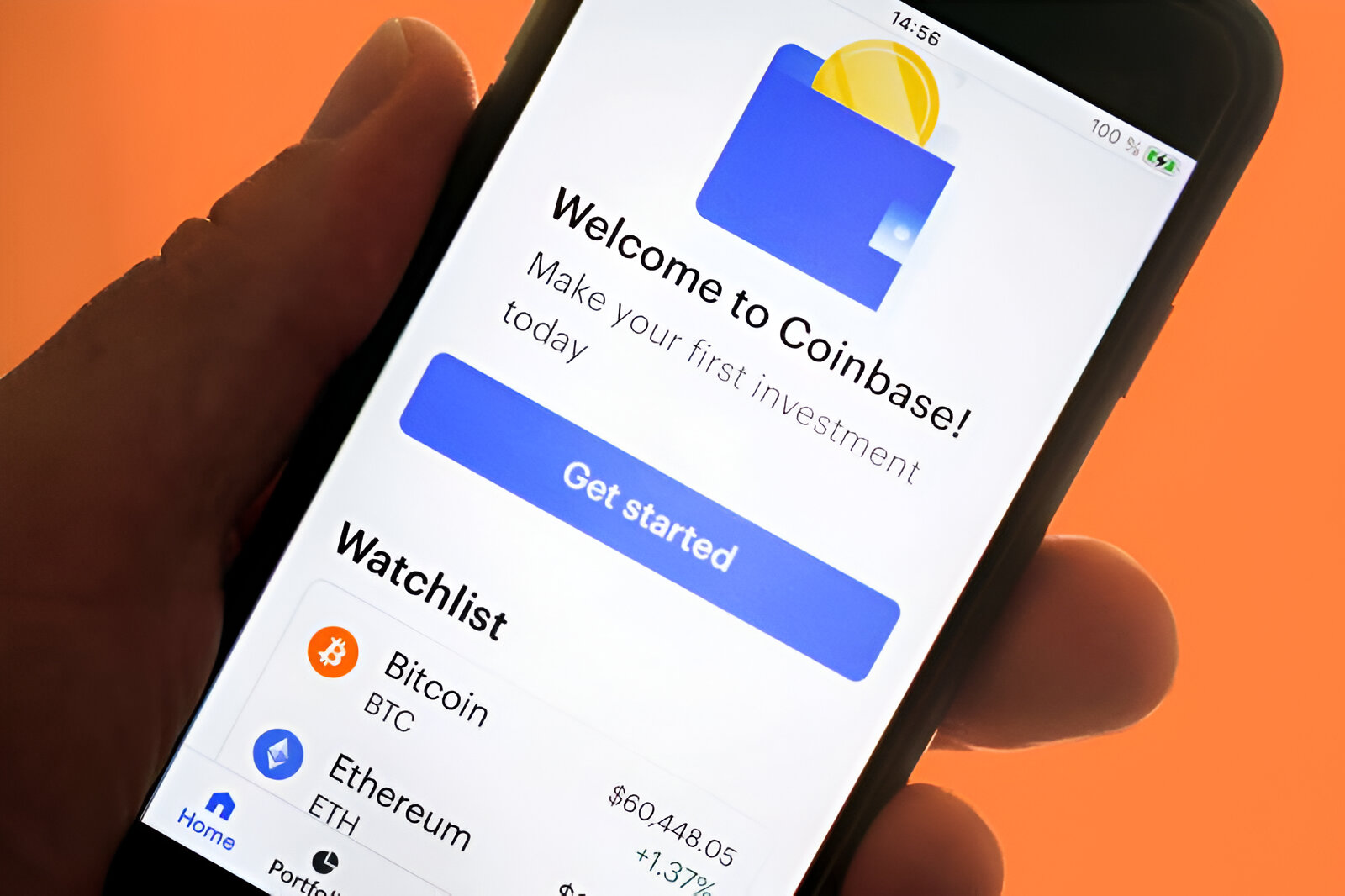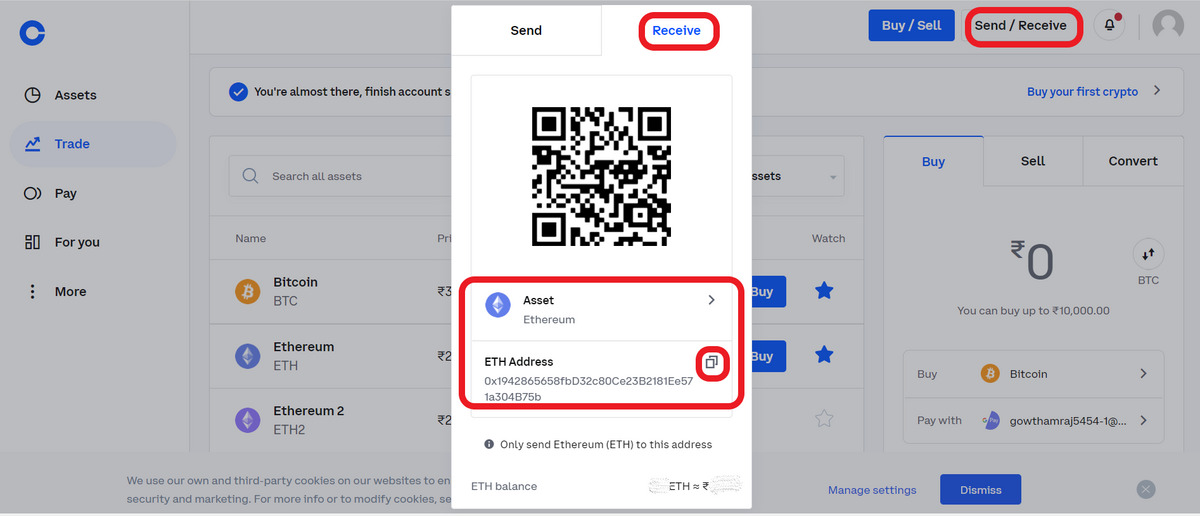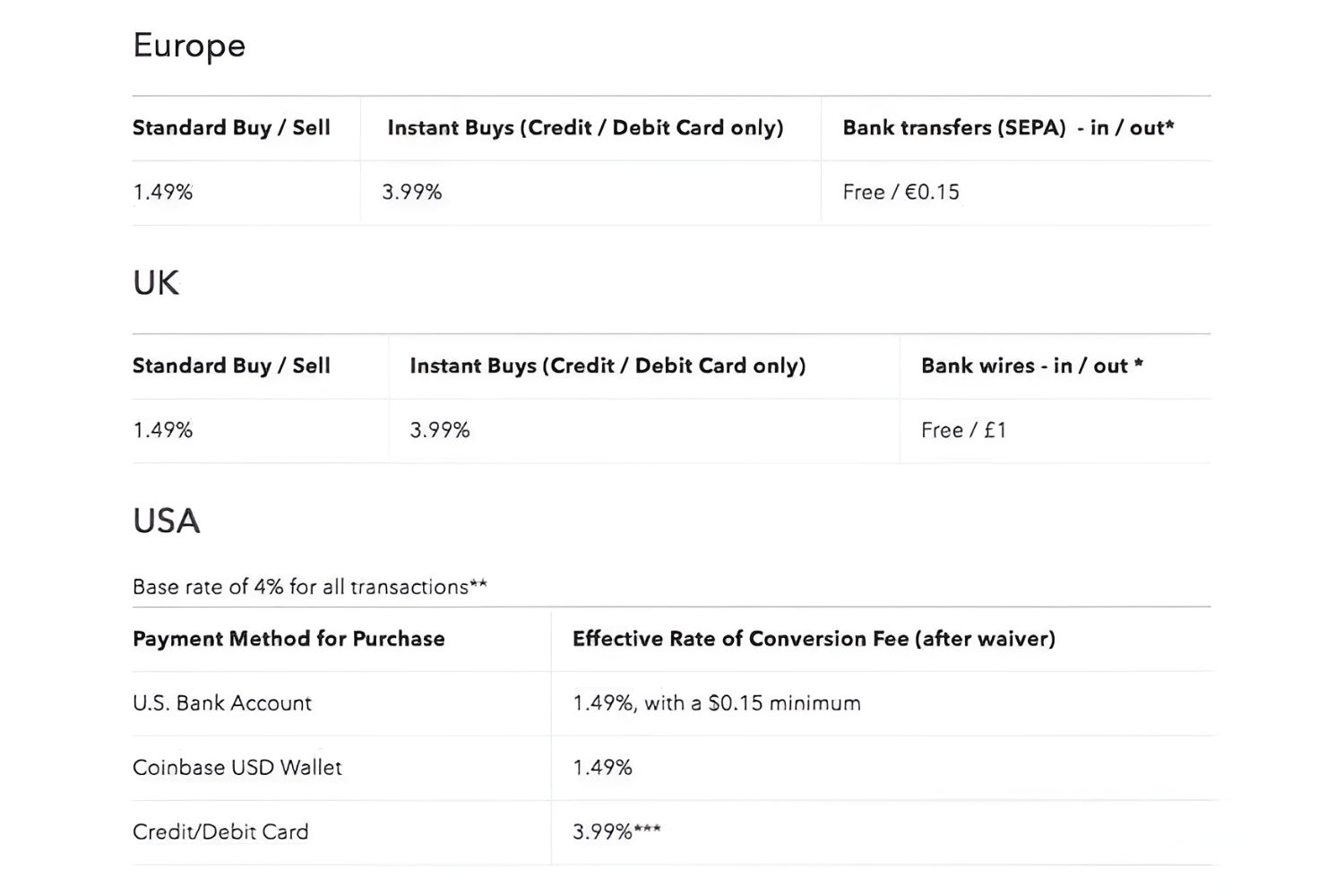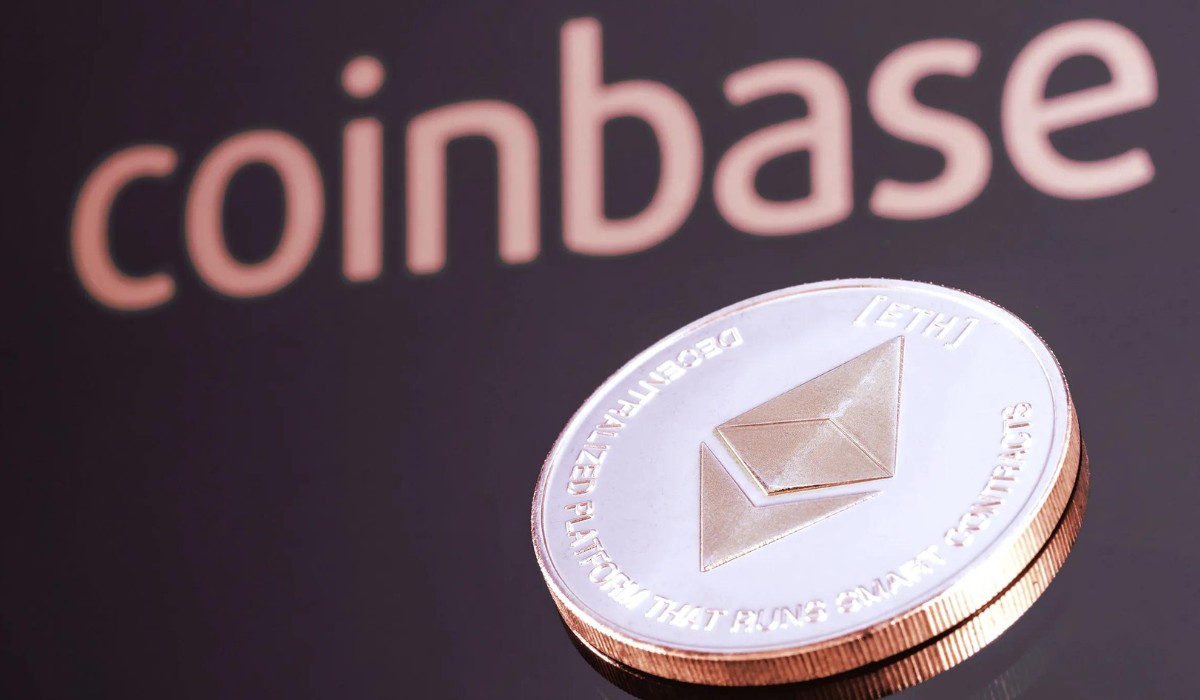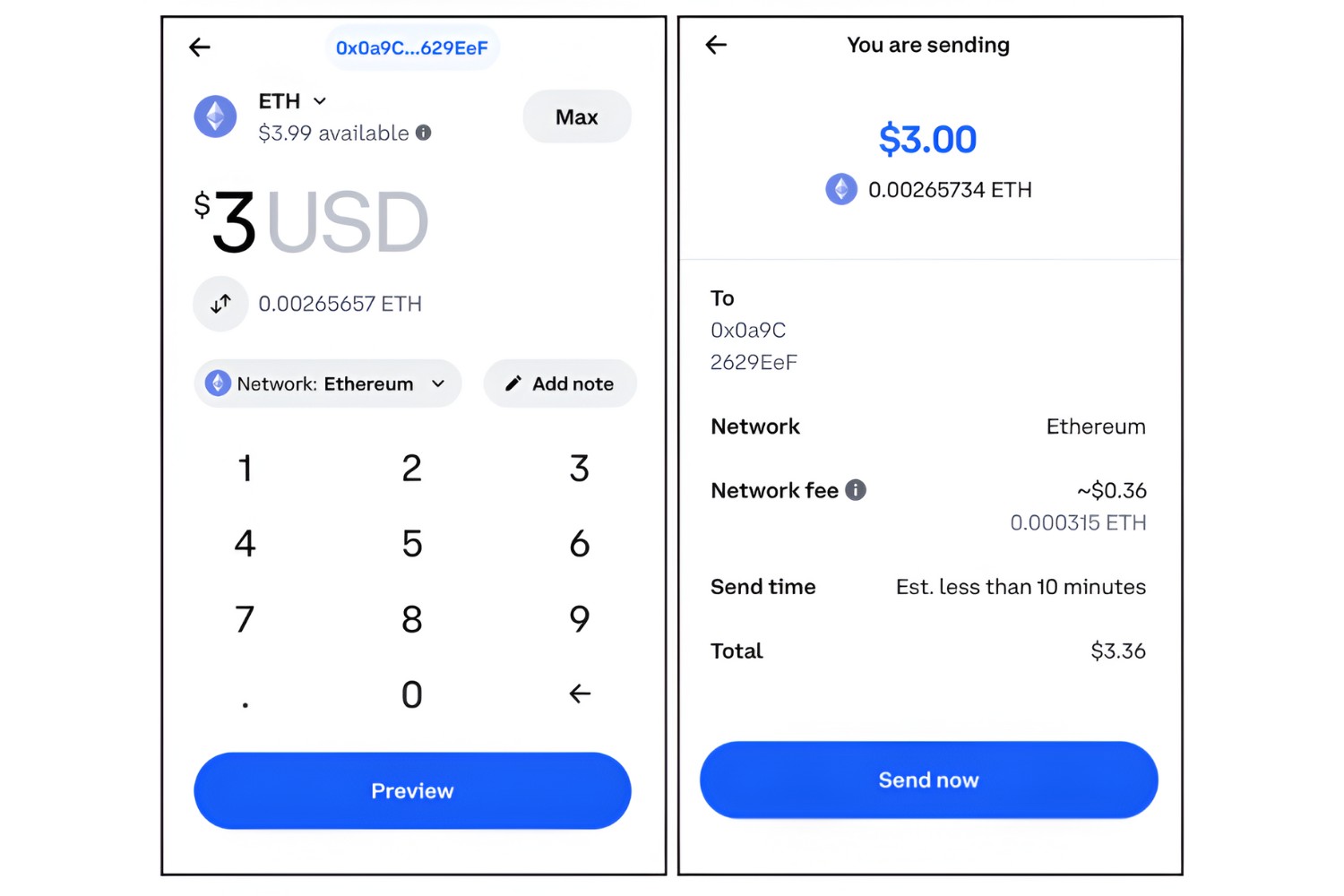Introduction
Welcome to our guide on how long it takes to send Ethereum from Coinbase! Bitcoin may have been the pioneer in the world of cryptocurrencies, but Ethereum has quickly emerged as a popular alternative. As an open-source blockchain platform, Ethereum allows users to create and deploy smart contracts and decentralized applications, making it incredibly versatile and valuable in the digital space.
However, if you are new to Ethereum, you may be wondering how long it takes to send your Ethereum from Coinbase, one of the most popular cryptocurrency exchange platforms. The transfer time can vary depending on several factors, including the network congestion, gas fees, and the destination of your funds.
In this guide, we will walk you through the process of transferring Ethereum from Coinbase, discuss the factors that can affect the transfer time, and provide tips on how to speed up the process. Whether you are sending your Ethereum to another exchange or a personal wallet, this guide will help you navigate the transfer process effectively.
Before we dive into the details, it is important to note that transferring Ethereum, like any other cryptocurrency, involves certain risks. It is crucial to double-check the recipient address and verify that you have taken the necessary security measures to protect your funds. Now, let’s explore how Ethereum transfers work and what factors can influence the transfer time.
How Does Ethereum Transfer Work?
Before understanding how long it takes to transfer Ethereum from Coinbase, let’s first take a look at how Ethereum transfers work. Ethereum, like other cryptocurrencies, operates on a decentralized network and utilizes blockchain technology.
When you initiate an Ethereum transfer from Coinbase, the transaction is added to a pool of unconfirmed transactions called the mempool. Miners then pick up these transactions and group them into blocks. Bitcoin uses a Proof-of-Work (PoW) consensus mechanism, where miners solve complex mathematical puzzles to validate the transactions and add them to the blockchain. However, Ethereum is in the process of transitioning to a Proof-of-Stake (PoS) consensus mechanism, known as Ethereum 2.0, which will rely on validators to secure the network.
Once the transaction is included in a block, it undergoes a verification process, where the network confirms that the sender has the necessary funds and that the transaction meets all the required criteria. This verification process is essential for ensuring the security and immutability of the Ethereum blockchain.
After the transaction is confirmed, it is considered part of the Ethereum blockchain and becomes permanent. At this point, the recipient’s wallet balance is updated, reflecting the transfer of Ethereum.
The time it takes for an Ethereum transfer to be confirmed depends on the network’s congestion and the gas fees you have chosen to pay. Gas fees, measured in Gwei, are the unit of measure for the computational work required to process the transaction. When the network is congested, users often increase their gas fees to incentivize miners to prioritize their transactions.
Now that we have a basic understanding of how Ethereum transfers work, let’s explore the factors that can affect the transfer time.
Factors That Affect Ethereum Transfer Time
Several factors can affect the time it takes to transfer Ethereum from Coinbase. Understanding these factors will help you manage your expectations and plan your transfers more effectively.
1. Network Congestion: The Ethereum network can experience periods of high congestion, especially during times of increased demand or when there are popular applications running on the network. During these times, the mempool can become flooded with transactions, resulting in longer confirmation times. It’s essential to monitor the network congestion and adjust your gas fees accordingly.
2. Gas Fees: Gas fees play a crucial role in determining the priority of your Ethereum transfer. When you set a higher gas fee, miners are more likely to include your transaction in the next block. Conversely, if you set a lower gas fee, your transaction might be delayed as miners prioritize higher-paying transactions. It’s important to find the right balance between speed and cost when setting your gas fee.
3. Gas Limit: Each Ethereum transaction has a gas limit, which represents the maximum amount of computational work the transaction can perform. Complex transactions or those involving smart contracts may require a higher gas limit. If you set a gas limit that is too low, your transaction may fail, leading to delays and additional fees. On the other hand, setting a gas limit that is too high can result in unnecessary fees.
4. Network Upgrades: Ethereum is a dynamic blockchain ecosystem that undergoes regular network upgrades. These upgrades, such as the transition to Ethereum 2.0, can impact network performance and transaction speeds. It’s important to stay informed about any upcoming upgrades that may affect your Ethereum transfers.
5. Recipient’s Wallet: The time it takes for your Ethereum transfer to be reflected in the recipient’s wallet can vary depending on their wallet provider. Some wallets may require additional confirmations before updating the balance, which could result in delays. It’s advisable to check the recipient’s wallet provider for any specific requirements or known issues.
It’s essential to note that while these factors can impact Ethereum transfer times, they are not always within your control. However, staying informed and making informed decisions regarding gas fees and network congestion can help minimize delays and ensure smoother transfers.
Sending Ethereum from Coinbase to Another Exchange or Wallet
If you want to send your Ethereum from Coinbase to another exchange or wallet, the process is relatively straightforward. Here’s a step-by-step guide to help you navigate the transfer:
- Login to your Coinbase account and navigate to the “Accounts” tab.
- Choose your Ethereum wallet from the list of available wallets.
- Click on the “Send” button, which is usually represented by an arrow or paper airplane icon.
- Enter the recipient’s Ethereum address in the designated field. Make sure to double-check the address to avoid any errors or loss of funds.
- Specify the amount of Ethereum you wish to send. Coinbase may provide you with the option to select from predefined values or enter a custom amount.
- Review the transaction details, including the recipient’s address and the amount, to ensure accuracy.
- If necessary, set the gas fees and gas limit for the transaction. Higher gas fees will likely result in faster confirmation times.
- Click on the “Confirm” or “Send” button to initiate the transfer.
- Wait for the transaction to be confirmed on the Ethereum network. You can monitor the status of your transaction by searching for the transaction hash on an Ethereum blockchain explorer.
- Once the transaction is confirmed, the Ethereum will be sent from your Coinbase wallet to the recipient’s address.
It’s important to note that different exchanges and wallets may have their own specific requirements or procedures for receiving Ethereum. Always consult the recipient platform’s documentation or support resources to ensure you are following the correct process.
Additionally, be mindful of any minimum deposit amounts or withdrawal restrictions imposed by the receiving platform. These limitations can impact the successful transfer of Ethereum and may require additional steps or adjustments.
Now that we have covered sending Ethereum to another exchange or wallet, let’s explore the process of sending Ethereum from Coinbase to a personal wallet.
Sending Ethereum from Coinbase to a Personal Wallet
If you prefer to have full control over your Ethereum holdings, you may choose to send it from Coinbase to a personal wallet. This allows you to manage your own private keys and provides an extra layer of security. Here’s a step-by-step guide to help you transfer Ethereum from Coinbase to a personal wallet:
- Login to your Coinbase account and navigate to the “Accounts” tab.
- Choose your Ethereum wallet from the list of available wallets.
- Click on the “Send” button, usually represented by an arrow or paper airplane icon.
- Enter the Ethereum address of your personal wallet in the designated field. It’s crucial to double-check the address to avoid any errors or loss of funds.
- Specify the amount of Ethereum you wish to send. Coinbase may provide you with options to select from predefined values or enter a custom amount.
- Review the transaction details, including the recipient’s address and the amount, to ensure accuracy.
- If necessary, set the gas fees and gas limit for the transaction. Higher gas fees will likely result in faster confirmation times.
- Click on the “Confirm” or “Send” button to initiate the transfer.
- Wait for the transaction to be confirmed on the Ethereum network. You can monitor the status of your transaction by searching for the transaction hash on an Ethereum blockchain explorer.
- Once the transaction is confirmed, the Ethereum will be sent from your Coinbase wallet to your personal wallet’s address.
It’s important to note that when sending Ethereum to a personal wallet, you are responsible for the security of your wallet and private keys. Ensure that you have a backup strategy in place and keep your private keys secure. Losing access to your private keys can result in the permanent loss of your Ethereum.
Additionally, it’s recommended to verify the compatibility of your chosen personal wallet with Ethereum. Different wallets may support different versions of Ethereum or have specific requirements for receiving tokens. Consult the documentation or support resources of your personal wallet to ensure a smooth transfer.
By sending Ethereum from Coinbase to a personal wallet, you have the freedom to store, manage, and use your Ethereum as you see fit. Having control over your private keys enhances the security and sovereignty of your assets within the crypto space.
Tips to Speed Up Ethereum Transfer
Transferring Ethereum from Coinbase or any other wallet can sometimes take longer than expected due to network congestion or other factors. If you want to expedite the process, consider the following tips:
- Adjust Gas Fees: Increasing the gas fees you are willing to pay can incentivize miners to prioritize your Ethereum transfer. Keep an eye on the current gas price and adjust your fee accordingly to achieve faster confirmation times. However, be mindful of setting excessively high gas fees, as they may not always guarantee immediate confirmation.
- Gas Limit Optimization: Optimize the gas limit for your Ethereum transfer. Setting a gas limit that is too high will result in extra fees, while a gas limit that is too low can cause the transaction to fail. Experiment with gas limits to find the optimal balance between cost and transaction speed.
- Monitor Network Congestion: Keep an eye on the network congestion and choose periods of lower activity to initiate your Ethereum transfer. Avoid peak times when the network is busy, as this can lead to longer confirmation times.
- Choose the Right Wallet: Consider using a wallet that allows you to adjust gas fees and gas limits. Some wallets provide this functionality, allowing you more control over the transaction speed. Research different wallet options and choose one that aligns with your transfer requirements.
- Use Layer 2 Solutions: Explore the possibility of using Layer 2 solutions, such as Ethereum’s various scaling solutions like Optimism or Polygon. These solutions aim to improve scalability and reduce transaction congestion on the main Ethereum network, resulting in faster transfers.
- Research Exchange Policies: If you are sending Ethereum to another exchange, research the exchange’s withdrawal policies. Some exchanges may require additional confirmations before crediting your account, resulting in longer transfer times. Choose an exchange with faster withdrawal processes if speedy transfers are a priority.
- Double-Check Transaction Details: Before confirming your Ethereum transfer, double-check the recipient address and transaction details to avoid any mistakes or potential loss of funds. Confirm that you have entered the correct address and review the transaction amount and gas fees to ensure accuracy.
While these tips can help speed up your Ethereum transfers, it’s important to keep in mind that network conditions and external factors may still introduce delays. Patience is sometimes required when dealing with blockchain-based transactions, as the priority of your transfer is ultimately determined by the network and its participants.
By following these tips and staying informed about current network conditions, you can increase the chances of your Ethereum transfer being confirmed quickly and efficiently.
Conclusion
Transferring Ethereum from Coinbase to another exchange or personal wallet is a common task for cryptocurrency users. While the exact transfer time can vary depending on several factors, such as network congestion, gas fees, and recipient wallet policies, understanding the process and optimizing your approach can help expedite the transfer.
We discussed how Ethereum transfers work, from being added to the mempool to being confirmed on the blockchain. We also explored the factors that can affect transfer times, including network congestion, gas fees, gas limits, network upgrades, and recipient wallet policies.
When transferring Ethereum from Coinbase to another exchange or wallet, it’s important to follow the specific instructions provided by the recipient platform. Double-checking the recipient address and transaction details is crucial to avoid any mistakes or loss of funds.
If you prefer greater control over your Ethereum, sending it to a personal wallet is a wise choice. This allows you to manage your own private keys and enhances the security of your assets. However, ensure that you have a secure backup strategy in place and keep your private keys safe.
To speed up your Ethereum transfers, consider adjusting gas fees, optimizing gas limits, monitoring network congestion, choosing the right wallet, exploring Layer 2 solutions, and being mindful of exchange withdrawal policies. These tips can help increase the chances of faster confirmation times, but it’s important to be patient and aware that external factors beyond your control may still introduce delays.
By understanding the transfer process, managing your expectations, and implementing the tips discussed, you can navigate Ethereum transfers effectively and make them more efficient. Always stay informed about the latest developments in the Ethereum network and adapt your strategies accordingly.
Remember, transferring Ethereum involves certain risks, and it’s crucial to exercise caution, conduct thorough research, and double-check all transaction details to protect your funds. With the right knowledge and approach, you can confidently navigate the world of Ethereum transfers and harness the full power of this dynamic blockchain platform.







